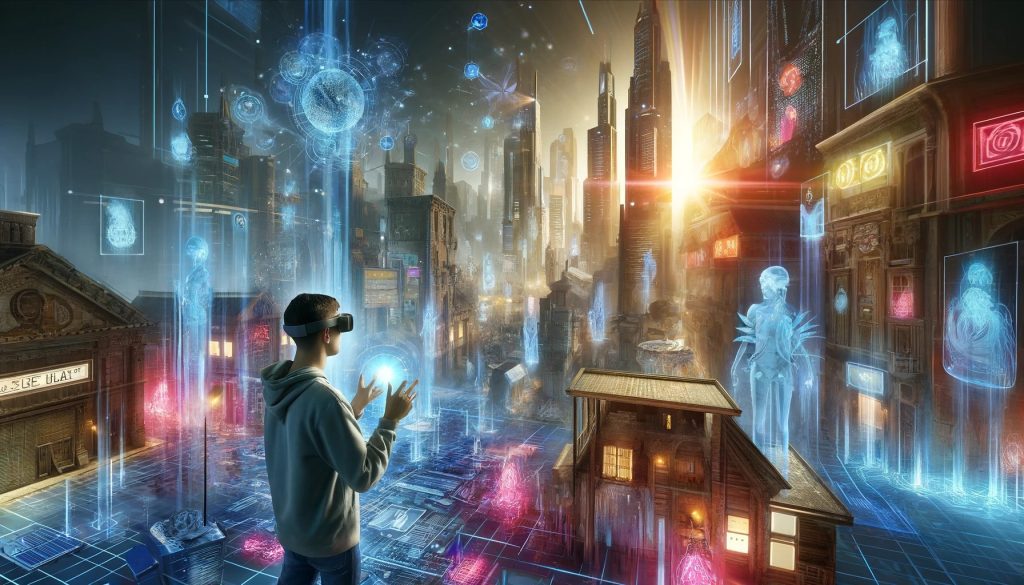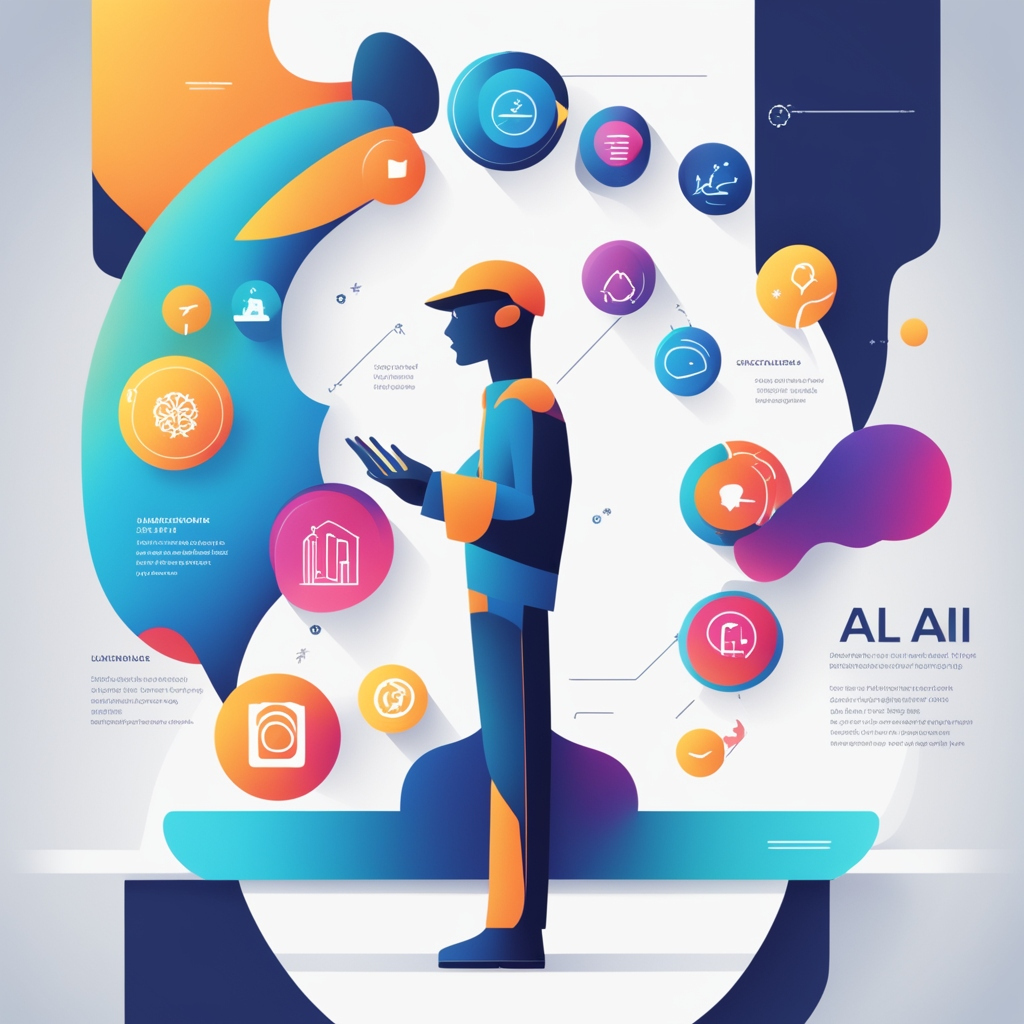Introduction
Augmented Reality (AR) is rapidly transforming the way we interact with the world around us. By overlaying digital information onto the physical environment, AR enhances our perception of reality, providing new and immersive experiences. This article delves into the intricacies of augmented reality, its applications, and its impact on various industries. We will explore the meaning of AR, provide examples, and discuss the latest advancements, including Google AR and AR glasses.
What is Augmented Reality?
Augmented Reality Meaning and Definition
Augmented Reality (AR) refers to the technology that superimposes computer-generated images, sounds, and other sensory enhancements onto our real-world environment in real-time. Unlike virtual reality, which creates a completely immersive digital environment, augmented reality blends digital elements with the physical world, enhancing the user’s natural surroundings.
The definition of augmented reality can be summarized as a system that combines real and virtual worlds, is interactive in real-time, and is registered in three dimensions. This capability allows users to experience an enriched version of reality, where virtual objects coexist with physical ones seamlessly.
Artificial Reality and Augmented Reality
While sometimes used interchangeably, artificial reality is a broader term encompassing any technology that alters or enhances reality, including both augmented and virtual reality. Virtual reality (VR) creates a fully immersive digital experience, whereas augmented reality enhances the real world with digital overlays.
Augmented Reality Examples
AR technology is being utilized across various sectors, showcasing its versatility and potential. Here are some notable augmented reality examples:
- Education: AR is revolutionizing education by providing interactive and immersive learning experiences. Apps like Google Expeditions allow students to take virtual field trips to historical sites and explore the human body in 3D.
- Healthcare: Surgeons use AR to overlay digital images on a patient’s body, providing better precision during procedures. AR can also be used for training purposes, offering medical students realistic practice without the risk.
- Retail: Retailers like IKEA use AR to let customers visualize how furniture will look in their homes before making a purchase. This is done through apps that overlay digital furniture onto a real-world view of the customer’s room.
- Gaming: Games like Pokémon GO have brought AR into the mainstream, allowing players to see and interact with virtual characters in the real world through their smartphones.
- Navigation: AR-enhanced navigation apps can overlay directions onto the real world, making it easier for users to find their way without looking at a traditional map.
Google Augmented Reality Tools
- ARCore: Google’s AR development platform allows developers to create AR apps for Android devices. ARCore uses the device’s camera to understand the environment and place virtual objects in it.
- Google Lens: This tool uses AR to provide information about objects seen through a phone’s camera. For instance, pointing your camera at a plant will tell you its species, and scanning a restaurant menu can translate it into your preferred language.
- Google Maps Live View: This feature uses AR to overlay navigation instructions on the real world, providing intuitive guidance in complex environments.
AR Glasses: The Future of Wearable Technology
AR glasses represent the next frontier in augmented reality, offering a hands-free way to experience digital overlays in the real world. These glasses use transparent lenses to project digital information into the user’s field of vision.
Key Players in AR Glasses
- Google Glass: One of the earliest attempts at AR glasses, Google Glass aimed to integrate a small heads-up display for everyday use. Although its consumer version was discontinued, it paved the way for further innovations in AR wearables.
- Microsoft HoloLens: A more advanced and enterprise-focused device, HoloLens offers mixed reality experiences by overlaying holograms onto the user’s environment. It’s widely used in industries like manufacturing, healthcare, and education.
- Magic Leap: Known for its high-quality AR experiences, Magic Leap provides detailed and interactive digital overlays, making it a favorite in fields like design and training.
- Apple AR Glasses (rumored): With Apple’s consistent innovation in technology, their anticipated AR glasses will seamlessly integrate with the Apple ecosystem, offering intuitive and high-performance AR experiences.
Virtual Reality and Augmented Reality: Understanding the Differences
Key Differences Between VR and AR
While both virtual reality (VR) and augmented reality (AR) offer immersive experiences, they do so in fundamentally different ways:
- Immersion: VR completely immerses the user in a virtual world, shutting out the physical environment. AR, on the other hand, overlays digital information onto the real world, enhancing it without replacing it.
- Hardware: VR typically requires a headset that covers the user’s eyes completely, along with hand controllers for interaction. AR can be experienced through various devices, including smartphones, tablets, and AR glasses.
- Applications: VR finds wide application in gaming, training simulations, and virtual tours, offering fully controlled environments. On the other hand, AR serves more practical purposes like navigation, education, and real-time data visualization.
Complementary Technologies
Despite their differences, VR and AR can complement each other in hybrid applications, offering enhanced user experiences. For instance, a training program might use VR for immersive learning and AR for real-time, on-the-job guidance.
The Impact of Augmented Reality on Various Industries
Healthcare
AR is revolutionizing healthcare by improving diagnostic and treatment procedures. Surgeons can use AR to visualize a patient’s anatomy in 3D during operations, enhancing precision and outcomes. Medical students can practice complex procedures in a risk-free, augmented environment.
Education
In education, AR makes learning more engaging and interactive. Students can explore historical sites, conduct virtual experiments, and interact with 3D models, making complex subjects more accessible and understandable.
Retail and E-commerce
Retailers are leveraging AR to enhance the shopping experience. Customers can use AR apps to visualize products in their homes, try on clothes virtually, and receive personalized recommendations. This not only improves customer satisfaction but also reduces return rates.
Real Estate
Real estate agents use AR to provide virtual tours of properties, allowing potential buyers to explore homes without being physically present. This technology also enables the visualization of unbuilt projects, giving buyers a realistic preview.
Manufacturing and Maintenance
In manufacturing, AR is used for training, assembly, and maintenance. Workers can receive real-time instructions and visualize complex components, improving efficiency and reducing errors. AR also assists in remote maintenance, allowing experts to guide on-site workers from a distance.
The Future of Augmented Reality
Emerging Trends
The future of AR is promising, with several emerging trends set to shape the industry:
- 5G Integration: The advent of 5G technology will enhance AR experiences by providing faster data transfer speeds and lower latency, making real-time interactions more seamless and responsive.
- AI and AR: Artificial Intelligence (AI) will play a crucial role in enhancing AR capabilities. AI can improve object recognition, contextual understanding, and user interaction, making AR applications smarter and more intuitive.
- AR in Automotive: Augmented reality will revolutionize the automotive industry with heads-up displays that provide real-time navigation, hazard warnings, and other critical information directly on the windshield.
- Social AR: Social media platforms are increasingly incorporating AR features, from interactive filters to immersive ads. This trend is expected to grow, offering new ways for users to engage with content and each other.
Challenges and Considerations
Despite its potential, AR faces several challenges:
- Privacy Concerns: AR applications often require access to personal data and real-world environments, raising privacy and security issues.
- Technical Limitations: Creating seamless and realistic AR experiences requires significant computational power and sophisticated hardware, which can be expensive and challenging to develop.
- User Adoption: While AR is gaining traction, widespread adoption requires user education and affordable, accessible hardware.
Conclusion
Augmented Reality (AR) is poised to transform multiple facets of our lives, from how we shop and learn to how we work and play. With advancements in technology and increasing integration into various industries, the potential of AR is boundless. As we continue to explore and innovate, augmented reality will undoubtedly become an integral part of our everyday experiences, blurring the lines between the digital and physical worlds.
Best Article of Owasoft Technologies
Cloud Computing and Hybrid Cloud Solutions: An In-Depth Guide




